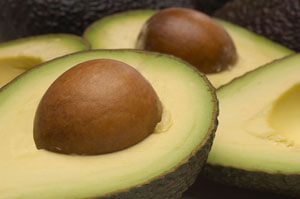4 easy food swaps
“If it tastes good, spit it out!”
This is a comment I frequently hear from people as they try to make their diet more heart healthy. My job is to try to dispute that statement and here are some of the suggestions that I can give to help make eating more heart friendly without sacrificing flavor.
Instead of…
- Spaghetti noodles, substitute spaghetti squash
- When cooked this squash will separate into long strands that you can top with marinara sauce and twirl around your fork, just like traditional spaghetti noodles.
- How to bake spaghetti squash:
Cut the squash in half lengthwise, scoop out the seeds and fibers with a spoon. Place on a baking sheet. Bake at 350° about an hour or until the skin gives easily under pressure and the inside is tender. Remove from oven and let it cool 10 minutes. Using a fork, scrape out the squash flesh a little at a time. It will separate into spaghetti-like strands. Place in a serving dish and serve hot. - 1 cup spaghetti squash = 42 calories, 10 grams carbohydrate; 1 cup cooked spaghetti noodles = 220 calories, 43 grams carbohydrate
- Hamburgers, substitute veggie or soyburgers
- If you haven’t tried soy or veggie burgers for many years, it’s time to try them again. They’ve changed and improved! They come in many different flavors, such as black bean, Mediterranean, Asian and grillers, which more closely resemble hamburgers.
- Some research indicates that soy protein can help lower cholesterol. Soy also is a good source of protein, fiber and omega-3 fatty acids.
- Veggie/soy burgers typically have three times less total fat and seven times less saturated fat than beef burgers, according to the Academy of Nutrition and Dietetics. They also provide about 3 to 4 grams of fiber compared to beef burgers which have no fiber.
- Butter, substitute avocado:
- Avocados can be used as a substitute for butter or oil in your favorite baked good recipes like cookies, cakes or muffins.
- Avocado will increase the nutritional value of baked goods by contributing many vitamins and minerals. Avocados are high is unsaturated (healthy) fats (monounsaturated and polyunsaturated fats), which makes them a great substitute for ingredients typically used in baking that are high in saturated fat, such as butter.
- For most recipes you can substitute on a one to one ratio, although individual recipes may vary. In some, recipes it may be necessary to add a little bit of liquid to make the batter thinner.
- White flour, use some whole wheat flour
- If you’re looking for a way to boost fiber in your diet, substituting whole wheat flour for some of your white flour is a good option. One cup of whole wheat flour has 15 grams of fiber and one cup of white flour has 3 grams of fiber.
- Whole wheat flour has a nutty flavor and more nutrients than white flour but you get a heavier, denser end product. Substituting whole wheat flour for white flour takes a little trial and error, but replacing ½ the white flour with whole wheat flour will usually not be noticeable in recipes.
- Tip: mix half whole wheat flour and half white flour in your flour canister so you always have this higher fiber flour mixture available for baking.
